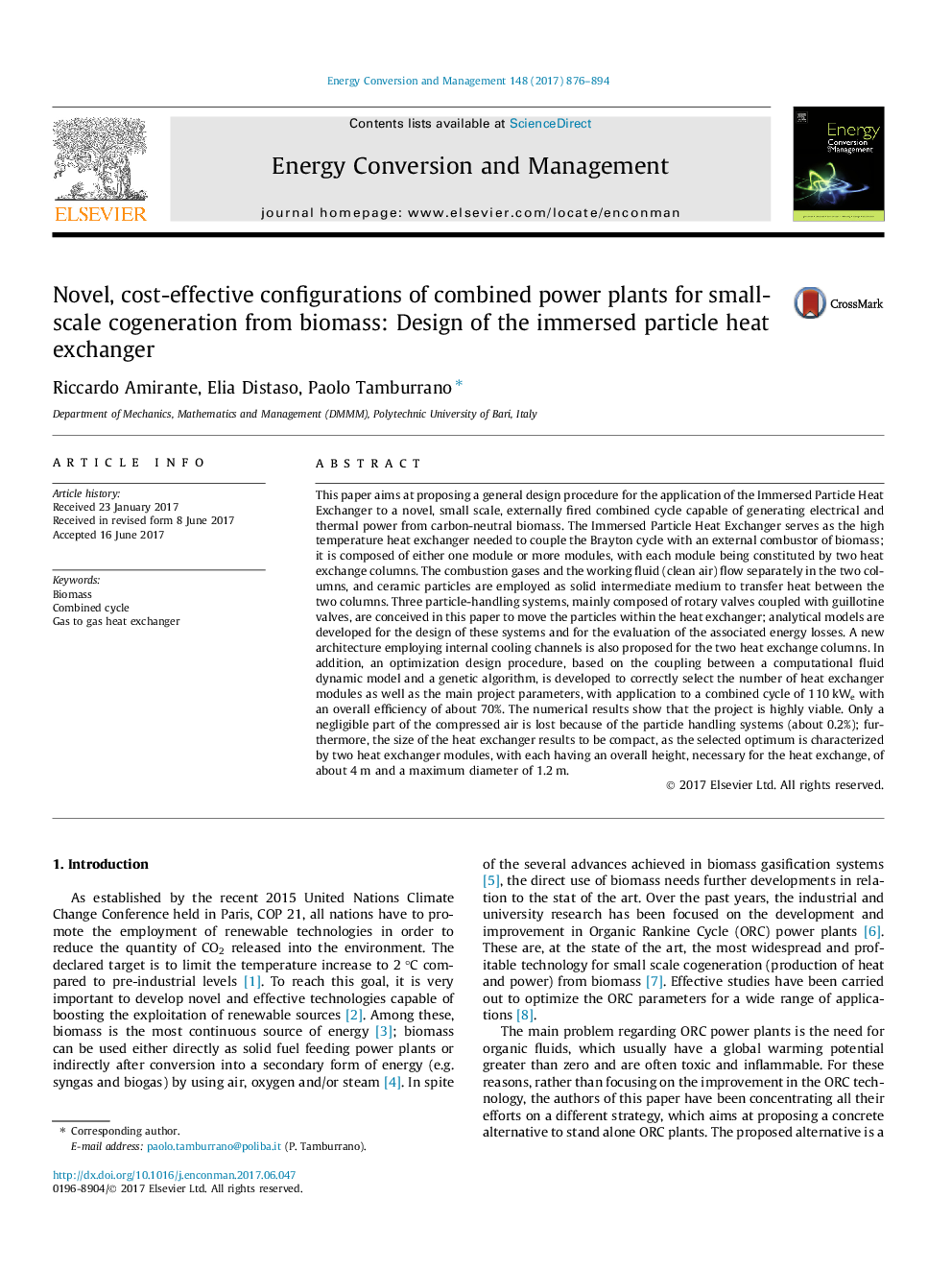| Article ID | Journal | Published Year | Pages | File Type |
|---|---|---|---|---|
| 5012587 | Energy Conversion and Management | 2017 | 19 Pages |
Abstract
This paper aims at proposing a general design procedure for the application of the Immersed Particle Heat Exchanger to a novel, small scale, externally fired combined cycle capable of generating electrical and thermal power from carbon-neutral biomass. The Immersed Particle Heat Exchanger serves as the high temperature heat exchanger needed to couple the Brayton cycle with an external combustor of biomass; it is composed of either one module or more modules, with each module being constituted by two heat exchange columns. The combustion gases and the working fluid (clean air) flow separately in the two columns, and ceramic particles are employed as solid intermediate medium to transfer heat between the two columns. Three particle-handling systems, mainly composed of rotary valves coupled with guillotine valves, are conceived in this paper to move the particles within the heat exchanger; analytical models are developed for the design of these systems and for the evaluation of the associated energy losses. A new architecture employing internal cooling channels is also proposed for the two heat exchange columns. In addition, an optimization design procedure, based on the coupling between a computational fluid dynamic model and a genetic algorithm, is developed to correctly select the number of heat exchanger modules as well as the main project parameters, with application to a combined cycle of 110Â kWe with an overall efficiency of about 70%. The numerical results show that the project is highly viable. Only a negligible part of the compressed air is lost because of the particle handling systems (about 0.2%); furthermore, the size of the heat exchanger results to be compact, as the selected optimum is characterized by two heat exchanger modules, with each having an overall height, necessary for the heat exchange, of about 4Â m and a maximum diameter of 1.2Â m.
Keywords
Related Topics
Physical Sciences and Engineering
Energy
Energy (General)
Authors
Riccardo Amirante, Elia Distaso, Paolo Tamburrano,
